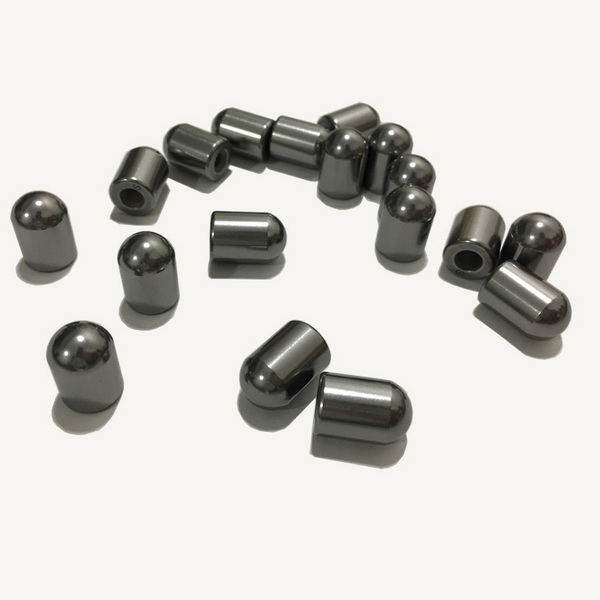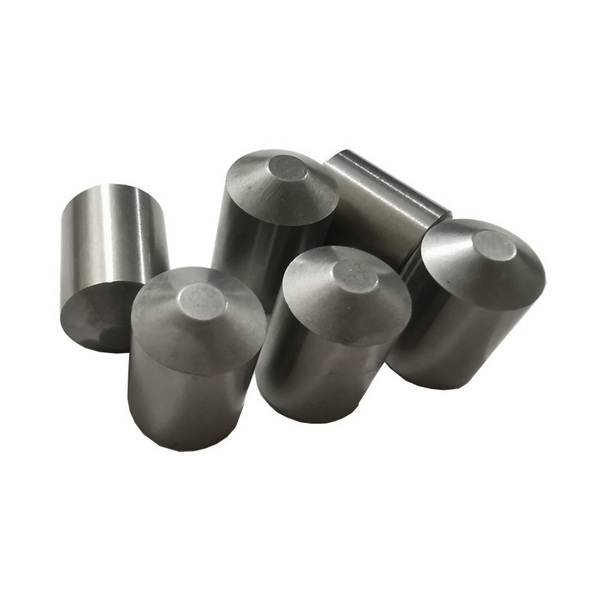Content Menu
● Introduction
● What Carbide Buttons Are and How They Work
>> Core Properties and Performance
● Manufacturing Process: Engineering Precision
>> Powder Preparation and Mixing
>> Pressing and Compaction
>> Sintering: Achieving Ultimate Strength
>> Forging and Post-Processing
>> Insertion Technology: Copper Brazing, Cold Press, Hot Press
● Product Features and Selection Criteria
>> Material Selection
>> Coating and Surface Treatments
>> Precise Geometry
>> Customization and OEM Services
● The Russian Market Landscape
● Quality Assurance: Ensuring Longevity and Reliability
● Procurement Guidance for International Buyers
● Innovations in Carbide Button Design
>> Advanced Graded Buttons
>> Smart Coatings and Additives
● Comparative Considerations for Buyers
● Future Directions and Strategic Partnerships
● Conclusion
● FAQ
>> 1. What are carbide buttons, and why are they important in drilling?
>> 2. How do I choose the right carbide button grade for different rock types?
>> 3. Do Russian carbide button suppliers offer OEM/ODM services?
>> 4. What surface coatings are commonly used on carbide buttons?
>> 5. What quality measures should I request from carbide button manufacturers and suppliers?
Introduction
Carbide buttons play a central role in the mining, construction, and drilling industries, especially across Russia's vast resource-rich territory. These high-performance wear parts are engineered for longevity and efficiency, allowing equipment to tackle hard rock and abrasive formations with minimal downtime. Russia's carbide button manufacturers and suppliers leverage advanced powder metallurgy, innovative design, and quality assurance to meet the strict requirements of global energy, infrastructure, and mineral extraction projects. This article explores candidate manufacturers and suppliers, delves into their key technical strengths, and offers procurement guidance for international buyers seeking OEM and custom solutions. Throughout, the phrase “Carbide Button Manufacturers and Suppliers” is emphasized to support search visibility and smooth technical discussion.

What Carbide Buttons Are and How They Work
Carbide buttons are essentially inserts made from tungsten carbide alloyed with cobalt or nickel, responsible for the exceptional hardness and impact resistance required for drilling, boring, and mining activities. These buttons are fixed into drill bit bodies and rock-crushing equipment, where they repeatedly strike, cut, and break rock or ore. Due to the ultra-high density and hardness of tungsten carbide, carbide buttons can endure extreme stress, thermal cycling, and abrasion.
Core Properties and Performance
- Microstructure: Fine WC grain size enables higher toughness and resistance to microcracking.
- Hardness Range: Typically measured 1400–3000 HV (Vickers hardness), outperforming steel or ceramic alternatives for rock-cutting durability.
- Density & Porosity: Low porosity is crucial for withstanding repeated impact and avoiding premature failure in abrasive environments.
- Shape Options: Spherical, conical, parabolic, chisel, and flat-top buttons are commonly used, each tailored for specific rock types and operational needs.
Manufacturing Process: Engineering Precision
The carbide button manufacturing process is a multi-stage operation blending metallurgy, engineering, and rigorous process controls to achieve the necessary material and dimensional standards.
Powder Preparation and Mixing
Manufacturers begin by selecting high-purity tungsten carbide and cobalt powders, which are milled and blended. The binder metal ensures toughness while the carbide delivers wear and hardness. Precise ratios are critical, usually involving automated mixing systems to guarantee homogeneity.
Pressing and Compaction
After blending, powder mixtures are pressed into shape using dies under high pressure. The press can be mechanical or hydraulic, delivering uniform green bodies with consistent density. Innovations in die design allow manufacturers to produce complex shapes and tight dimensional tolerances.
Sintering: Achieving Ultimate Strength
Pressed green bodies are sintered in controlled atmospheres at temperatures exceeding 1300°C, fusing carbide grains and binders into a dense, ultra-hard mass. This stage is critical for ultimate hardness, toughness, and microstructural integrity.
Forging and Post-Processing
Forging and heat treatments further refine the microstructure and eliminate porosity. The result is increased toughness and improved stress resilience. Buttons are ground and polished to precise shapes and smooth finishes, enabling superior fit and wear performance within drill assemblies.
Insertion Technology: Copper Brazing, Cold Press, Hot Press
Advanced Russian manufacturers employ several methods to insert finished carbide buttons into drill bits:
- Copper Brazing: Uses high-temperature welding alloys to bond the button, suitable for single-use bits and harsh service environments.
- Cold Press: Presses the button into the bit body at ambient temperatures, prioritizing speed but requiring exact dimensional control.
- Hot Press: Heats the bit body, allowing a tight thermal fit and superior bond strength, now considered the industry standard for high-performance bits.
These insertion technologies affect button retention, service life, and resistance to shock or vibration.
Product Features and Selection Criteria
Material Selection
Russian suppliers offer a broad portfolio of carbide grades, each suited for specific combinations of hardness, toughness, and wear life. Buyers typically coordinate with manufacturers to choose:
- Spherical buttons for hard rock mining and percussive drilling.
- Conical or parabolic buttons for easier penetration in medium and soft formations.
- Flat-top and chisel buttons for cutting and breaking tasks with high abrasion.
Coating and Surface Treatments
Optional coatings such as Titanium Nitride (TiN) or Titanium Aluminum Nitride (TiAlN) further extend wear life by reducing friction and surface fatigue. These coatings also improve corrosion resistance in wet or chemically aggressive operating zones.
Precise Geometry
Button diameter, length, and curvature are precisely controlled to fit drill bit sockets. Manufacturers adhere to strict dimensional tolerances (often within microns) to ensure compatibility and retention strength, minimizing button pop-out and failure during operation.
Customization and OEM Services
Top Russian carbide button manufacturers and suppliers provide:
- OEM services for mining, drilling, and construction brands.
- ODM customization tailored to precise field conditions, including specialized button shapes, binder chemistries, and branded packaging.
- Collaborative design with international buyers to develop proprietary solutions for new equipment lines.

The Russian Market Landscape
Russia's abundant mineral resources and thriving infrastructure sectors require continuous innovation in tool technology. Domestic manufacturers have evolved to deliver carbide buttons meeting international standards, positioning themselves as premium suppliers for global buyers. Key strengths include:
- Robust R&D capabilities for alloy development and performance optimization.
- Advanced process engineering—automated sintering, CNC grinding, and quality control.
- Flexible production, accommodating small batches for prototyping and large volumes for established drilling operations.
International buyers benefit from:
- Proximity to Eurasian markets, facilitating logistics and lowering freight costs.
- Competitive pricing stemming from integrated supply chains and economies of scale.
- Access to technical specialists who guide material selection for unique rock formations or performance requirements.
Quality Assurance: Ensuring Longevity and Reliability
Carbide button manufacturers and suppliers in Russia employ rigorous quality control measures to certify every batch. Testing regimes include:
- Rockwell and Vickers hardness measurements to confirm resistance to wear and impact.
- Grain size and microstructure analysis for toughness validation.
- Dimensional inspection using advanced metrology tools.
Full traceability systems allow buyers to track the provenance of raw materials and production batches, critical for compliance with mining and energy sector regulations.
Procurement Guidance for International Buyers
Procuring carbide buttons from Russian suppliers entails a structured engagement process:
- Request detailed capability statements, including material grades, customization options, and demonstration of OEM/ODM experience.
- Evaluate reference projects and case studies demonstrating performance in similar applications.
- Run pre-production samples and pilot tests to verify button life and fit.
- Negotiate technical support agreements and after-sales service for rapid troubleshooting and ongoing optimization.
Logistics considerations include:
- Confirming packaging standards, lead times, and minimum order quantities.
- Ensuring export clearances, compliance with international regulations (ISO, ASTM).
- Establishing clear communication channels with supplier technical teams for specification updates and troubleshooting.
Innovations in Carbide Button Design
Russian manufacturers are increasingly investing in R&D to deliver new carbide button designs that meet evolving mining and construction needs.
Advanced Graded Buttons
- Multi-layered structures enhance resistance to heat and mechanical stress.
- Proprietary binder formulations optimize toughness without sacrificing hardness.
- Aerodynamic surface geometries reduce friction, extending service life under continuous operation.
Smart Coatings and Additives
- Nano-engineered coatings repel dust and reduce material buildup.
- Integration of smart sensors (under development) may enable real-time wear monitoring and predictive maintenance.
Comparative Considerations for Buyers
When comparing carbide button manufacturers and suppliers, evaluate:
- Range and diversity of carbide grades, tailored for your target operation.
- Coating and surface treatment options, ensuring compatibility with environmental conditions.
- Strength of the supplier's OEM/ODM customization workflow.
- Quality assurance systems, including batch traceability and field-test evidence.
- Timeliness of logistics and after-sales support, especially when scaling up procurement.
Future Directions and Strategic Partnerships
Russian carbide button suppliers continue to expand international partnerships, aligning with global mining and infrastructure companies to jointly develop high-performance cutting tools. Buyers increasingly seek suppliers who offer:
- Long-term technical collaboration on new product development.
- Robust after-sale training and maintenance resources.
- Participation in joint performance trials and technical conferences.
Carbide Button Manufacturers and Suppliers in Russia thus stand at the crossroads of technical innovation, operational reliability, and global market competitiveness.
Conclusion
Russian carbide button manufacturers and suppliers have earned international recognition for their blend of advanced materials engineering, custom design, and quality consistency. By focusing on grade optimization, smart coatings, and reliable manufacturing processes, they meet the challenging demands of mining, drilling, and construction in some of the world's toughest conditions. International buyers should prioritize suppliers with a proven capability for OEM/ODM customization, strong QA systems, and collaborative technical support to ensure successful tool deployment and lower total cost of ownership. As markets continue to evolve, Russian manufacturers remain strategic partners for high-performance, cost-effective carbide button solutions.

FAQ
1. What are carbide buttons, and why are they important in drilling?
Carbide buttons are tungsten carbide inserts designed for drill bits, enabling them to cut and break through hard rock and abrasive materials efficiently. Their extreme hardness and toughness directly extend bit service life and improve drilling productivity.
2. How do I choose the right carbide button grade for different rock types?
Selection depends on the hardness and abrasivity of the rock, the type of drill bit, and performance objectives. Harder grades are best for tough rocks, while tougher grades perform well in zones prone to impact. Consulting with manufacturers on field tests and sample performance is advisable.
3. Do Russian carbide button suppliers offer OEM/ODM services?
Yes, most leading Russian manufacturers provide extensive OEM/ODM customization, adjusting button size, shape, binder composition, and branding to suit buyers' equipment and operational requirements.
4. What surface coatings are commonly used on carbide buttons?
Coatings such as TiN and TiAlN prolong wear life and enhance corrosion resistance, benefiting operations in aggressive mineral environments. The choice of coating should match both the material of the drill bit and expected field conditions.
5. What quality measures should I request from carbide button manufacturers and suppliers?
Request comprehensive quality documentation: material certificates, lot traceability, post-sintering hardness and density data, and case studies of field performance. Confirm that the supplier maintains robust QC systems and can support field evaluation and troubleshooting.
















